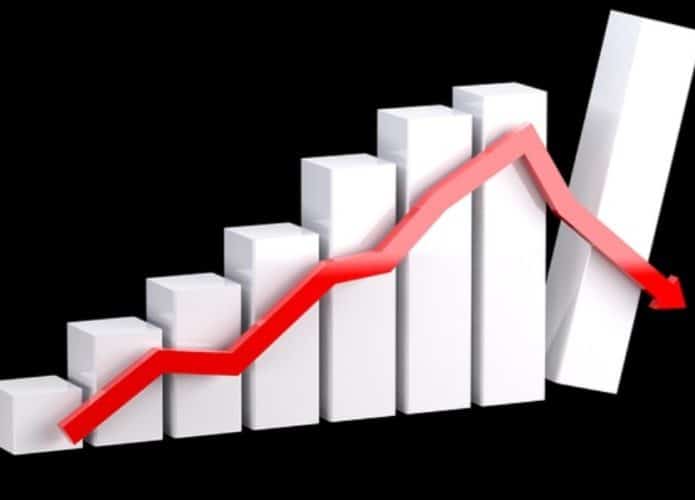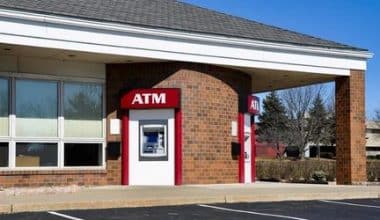An approach used in finance to value a security, project, business, or asset utilizing the time value of money is discounted cash flow analysis. The discounted cash flow model is used a lot in the valuation of patents, the management of a company’s finances, the development of real estate, and the financing of investments. The discounted cash flow model (DCF model) calculates a company’s future cash flows and discounts them to get its present value. Discounted cash flow (DCF) valuation model uses projected cash flows to figure out how much an investment is worth. A discounted cash flow model is based on the idea that a company’s value is based on how much cash it can bring in for its owners in the future. In this article, a useful example will be taken further, and the formula for the discounted cash flow model will be shown.
What is a Discounted Cash Flow Model?
Using the notions of the time value of money, the discounted cash flow (DCF) model is a method used in finance to value a security, project, business, or asset. The discounted cash flow model is often used in investment finance, property development, corporate financial management, and the valuation of patents. In the 1700s or 1800s, it was first used in industry, and in the 1960s, there was a lot of debate about it in the field of financial economics. In the 1980s and 1990s, it became popular in American courts.
Application
The following are the key components of valuing a corporation using discounted cash flows at a very high level; for more information, see Valuation using discounted cash flows and the illustrations below:
Projections of a company’s free cash flow: the amount of cash generated by its business operations after paying for operating costs and capital expenditures.
The cost of capital (debt and equity) for the business is the discount rate. These future Cash inflows are converted into present dollar equivalents using this rate, which functions as a kind of interest rate.
the value of a company at the conclusion of the projection period (typical for a DCF analysis is either a 5-year projection period or, occasionally, a 10-year projection period).
To use the approach, all future cash flows are calculated, discounted using the cost of capital, and their present values are then determined (PVs). The net present value (NPV) is the sum of all upcoming cash flows, both entering and leaving; see aside. When using DCF analysis to calculate NPV, present value is produced using inputs of cash flows and a discount rate. The discount rate, used in bond markets to compute yield, is calculated using cash flows and a price (present value).
History
Since the first time money was given at interest in antiquity, discounted cash flow computations have been utilized. Furthermore, there is evidence from research on ancient Egyptian and Babylonian mathematics that these cultures employed methods for discounting future financial flows. In the UK coal business, discounted cash flow analysis has been employed since at least the early 1700s.
The accounting book value, which is based on the price paid for the asset, differs from the discounted cash flow valuation. Discounted cash flow analysis became a common tool for valuing equities after the 1929 stock market crisis. In his 1930 book, Irving Fisher was the first person to fully explain the DCF method in terms of modern economics. The Theory of Interest and John Burr Williams in his 1938 book The Theory of Investment Value.
What Is the Difference Between NPV and Dcf?
A sequence of cash flows’ present value is measured by the NPV calculation, whereas their future value is determined by the DCF calculation. Unlike the DCF calculation, which discounts the present to the future, the NPV calculation discounts future cash flows back to the present.
How Do You Calculate Dcf?
The sum of the cash flow for each period divided by one plus the discount rate (WACC) raised to the power of the period number is the discounted cash flow (DCF) formula.
Why Is the Dcf Model the Best?
The DCF valuation model’s ability to produce results that are as close to an underlying stock market value as possible is one of its key features. Additionally, an organization’s true worth can be calculated using the discounted value of its expected cash flows in the future.
Discounted Cash Flow Model Example
When deciding whether to invest in a project or buy new equipment, a company usually uses its weighted average cost of capital (WACC) as the discount rate to calculate the discounted cash flow (DCF). The WACC looks at the average rate of return that business owners expect to get this year.
Let’s use the example of your organization wants to start a project. The WACC for the business is 5%. This indicates that your discount rate will be 5%. The project will cost $11 million to start, last for five years, and generate the expected annual cash flows listed below.
Cash flow
| Year | Cash flow |
| 1 | $1 million |
| 2 | $1 million |
| 3 | $4 million |
| 4 | $4 million |
| 5 | $6 million |
The DCF method was used to figure out the discounted cash flows of the project, which are shown in the table below.
Discounted Cash Flow
| Year | Cash flow | Discounted Cash Flow (nearest $) |
| 1 | $1 million | $952,381 |
| 2 | $1 million | $907,029 |
| 3 | $4 million | $3,455,350 |
| 4 | $4 million | $3,290,810 |
| 5 | $6 million | $4,701,157 |
The total value of the discounted cash flows comes to $13,306,727. We get the net present value (NPV) by subtracting the initial investment of $11 million from the total amount. This gives us $2,306,727, which is the NPV. The project may produce a return greater than the initial cost, or a positive return on investment, according to the positive number of $2,306,727. As a result, the project might be worthwhile.
In addition, the NPV would have been $693,272 if the project had cost $14 million. That would suggest that the project would cost more than it would earn in return. So, it might not be worthwhile to make it.
What Are the Two Methods Used in Dcf?
Net present value and internal rate of return are two analysis techniques that make use of the discounted cash flow concept.
What Is the Difference Between Dcf and Irr?
The discounted cash flow (DCF) is calculated by adding the present value of each cash flow from a specific investment. An indicator of an investment’s profitability is the internal rate of return (IRR). The internal rate of return (IRR) is the rate of return at which the present value of the investment’s cash flows equals the initial investment.
DCF Model of Valuation
By adjusting future cash flows for the time value of money, the discounted cash flow (DCF) valuation model establishes the company’s current value. This DCF analysis finds the current fair value of assets, projects, or companies by taking inflation, risk, and the cost of capital into account as well as making predictions about how the company will do in the future.
In other words, to calculate the present value estimate, which serves as the foundation for the possible investment now, the DCF valuation model takes into account the projected free cash flows of a company and discounts them back. Also, read COMPANY VALUATIONS: Methods, Definition, and Importance of Valuations
Is an NPV a Dcf?
Although the two ideas are closely similar, they’re not. NPV is the fourth step in the DCF calculation process. After projecting the expected cash flows, choosing a discount rate, discounting those cash flows, and adding them up, the NPV subtracts the upfront investment cost from the DCF.
What Are the Two Weaknesses of the Dcf Model?
- Discount rate estimation: Traditionally, DCF models have made the assumption that it is possible to evaluate an investment’s risk and determine the appropriate discount rate using the capital asset pricing model. However, some economists contend that empirical evidence has disproved the capital asset price model. Other models are put forth, but each is open to theoretical or empirical criticism.
- Problem with input-output: Since DCF is essentially a mechanical instrument for valuing assets, it is prone to the adage “garbage in, garbage out.” Small adjustments to inputs can have a huge impact on a company’s stock price. This is particularly true for terminal values, which account for a significant share of the discounted cash flow’s final value.
Is Dcf Based on EBITDA?
Whereas the DCF focuses on comprehending the inherent worth of a particular organization, the EBITDA multiple is mostly concerned with the relative value across comparable transactions.
DCF Model Formula
The discounted cash flow (DCF) calculation is an income-based valuation method that uses future projected cash flows to establish a security’s fair value. This method involves projecting predicted future cash flows up to the asset’s or company’s life and then using a discount rate to reduce those projected cash flows to arrive at the present value.
The Dcf Fundamental Formula Is as Follows:
DCF Formula =CFt /( 1 +r)t
Where,
- CFt = cash flow in period t.
- R = appropriate discount rate, taking into account how risky the cash flows are.
- t = asset’s estimated lifespan.
Cash flow cannot be predicted over the course of a business’s existence. As a result, cash flows are often only forecasted for the next 5–7 years, with the remaining time being covered by a terminal value. The expected business worth beyond the time frame for which cash flows are projected is known as “terminal value.” It is a key part of the discounted cash flow formula and can account for anywhere from 60% to 70% of a company’s value, so it should be taken into account. The everlasting growth rate or terminal value is determined using numerous approaches.
The terminal value is determined using the perpetual growth rate approach as follows:
TVn= CFn (1+g)/( WACC-g)
Where,
TVn =Terminal Value at the end of the specified period
CFn = The cash flow of the last specified period
g = the growth rate
WACC = The Weighted Average Cost of Capital
What Cash Flow Is Used for Dcf?
Free cash flow (FCF), a dependable indicator that lessens the noise brought on by accounting principles and financial reporting, is a key component of the DCF model. DCF values, unlike relative market comparables, are unaffected by market-wide over- or undervaluation.
Can You Use Capm for Dcf?
The CAPM (Capital Asset Pricing Model) is often used in a DCF calculation to find a discount rate for cash flows, especially the cost of equity.
Conclusion
We know that discounted cash flow analysis helps figure out how much a business is worth now based on how much money it will make in the future. This is so because the amount of future cash flow a company will generate will determine its worth. To get to the current value, we must nonetheless discount these future cash flows.
Discounted Cash Flow Model FAQs
What are the three discounted cash flow methods?What are the three discounted cash flow methods?
The DCF model’s three most critical components are the net present value, discount rate, and free cash flow.
What is the purpose of a DCF?
Discounted cash flow (DCF) is used to value an investment based on its future cash flows. Furthermore, DCF calculates the present value of an investment based on its future return.
Why is it called discounted cash flow?
It’s employed by company buyers. It’s based on cash flow since business cash flow will be added up. Commercially, $100 in your pocket today is worth more than $100 a year from now.
Similar Posts
- Operating Cash Flow: Uses and Its Applications
- Financial Model: How to Build a Financial Model
- Stock Valuation: Overview, & Effective Valuation Methods
- Capital Budgeting Decision Techniques and Analysis






